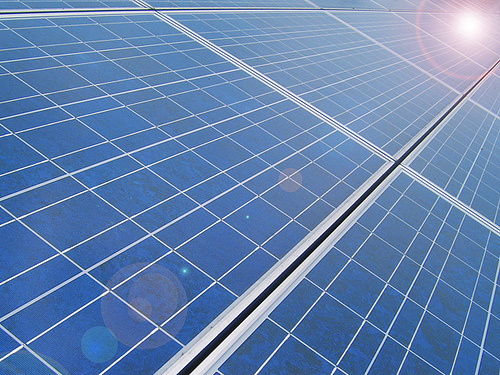Global energy needs could be satisfied for an entire year with the amount of energy the Sun beams onto Earth every hour. The SunÔÇÖs energy is harnessed and made useable in technology known as solar energy. At present, this technology produces less than 0.1% of global energy demand, partly due to the incredibly high cost of solar panels. However, in a recent study, researchers from the University of Pennsylvania and Drexel University have discovered a new paradigm for the construction of solar cells which could potentially make solar panels less expensive, easier to manufacture and more efficient.
When light hits a photovoltaic cell, it causes the electrons in that material to get excited and start to flow in a particular direction. This is known as polarity. These polar materials consistently cause electrons to flow only in one direction; this is why photovoltaic cells are usually made of two materials in two layers to achieve this. A new crystal structure, called a pervoskite, has been experimentally shown to absorb three to six times more solar energy than the conventional two layer system.
The majority of light absorbing material has a symmetrical crystal structure, making it non-polar and therefore unsuitable as voltaic cells since the electrons would not flow in a current. A perovskite crystal is polar and, therefore, a good photovoltaic material. This is due to it having the same cubic lattice of metal atoms, except that inside of each cube is an octahedron of oxygen atoms, and inside this is another kind of metal atom. The relationship between these two metal atoms gives directionality to the structure, thus making it polar and controlling the flow of electrons, uniformly in one direction.
Several attempts were made to produce these theorised polar pervoskite crystals before the researchers had success with a combination of potassium niobate, the parent, polar material, and barium nickel niobate. This family of materials was made with the bulk photovoltaic effect, this being when the electron takes off in one particular direction without having to cross from one material to another. It goes through the entire solar spectrum, overcoming the phenomenon that it only occurs under ultraviolet light. This means that the composition of the material can be changed as it grows, resulting in a single material that performs like a multi-junction solar cell.
This family of materials is remarkable because it is comprised of inexpensive, non-toxic and Earth-abundant elements, unlike those used in current solar panel technology.
Kirsty Franklin





Add Comment